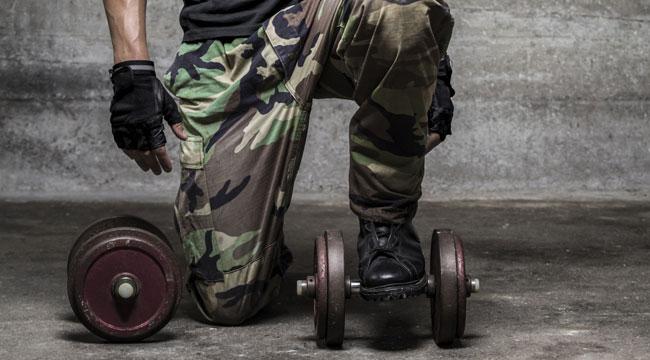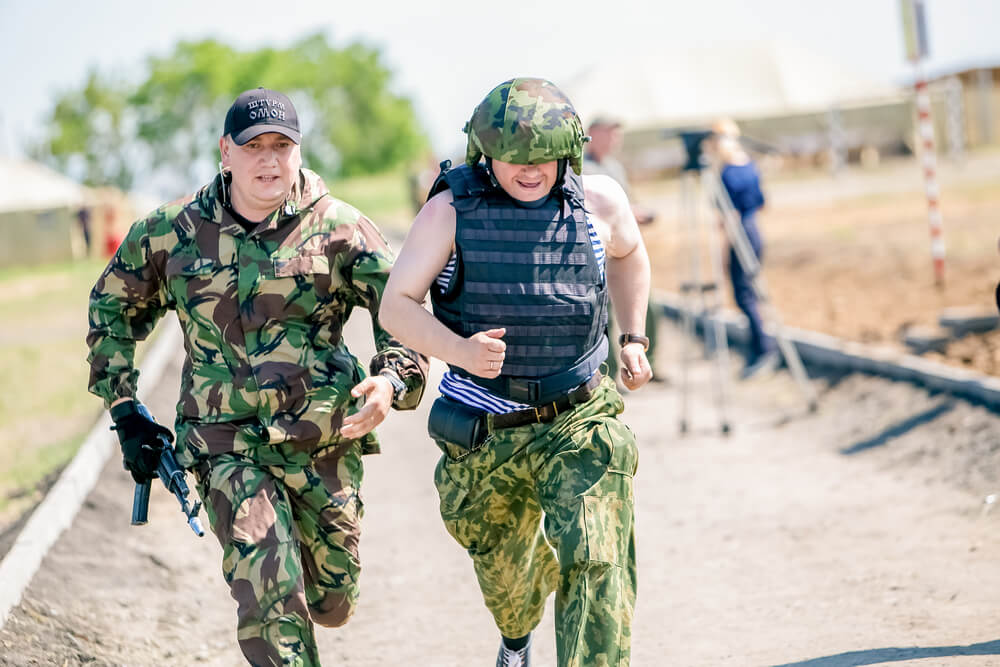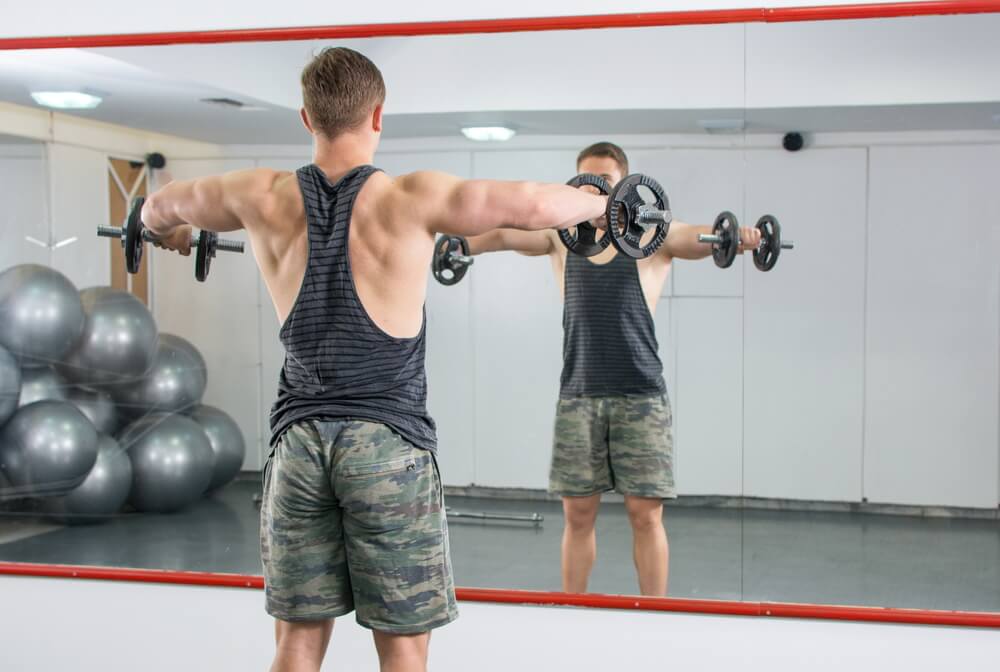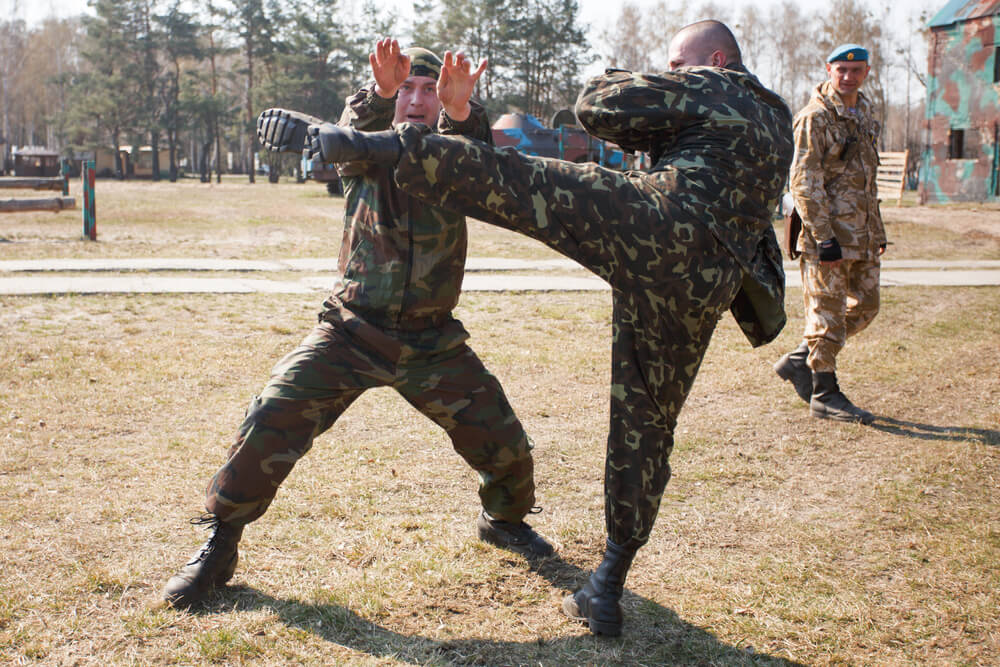
Wondering what kind of Apft Standards are needed to be in the U.S. Armed Forces? Wonder no more. We give you a look into what it takes to be one of these brave men and women.
There are few people whose fitness standards are more admired than those of the people enlisted in the Armed Forces. Soldiers on the front line have to be in peak physical condition to best serve in their particular branch, so workout regimen implemented by the military are extremely rigorous as a result.
A chain is only as strong as its weakest link, so any slacking on the part of the enlisted men and women could result in lethal consequences. If you are someone who is looking for some challenging top military workouts that yield great results, then training like a member of the Armed Forces may just be the right path for you.
Apft Standards : A Commitment To Excellence
To stay agile, alert and ready for anything that comes their way, soldiers, marines and sailors must meet certain physical fitness standards. The military measures these criteria through a physical fitness test—known by the shorthand PFT—to test cardiorespiratory fitness, strength, and agility. The PFT includes timed push-ups and sit-ups, as well as a timed two-mile run.
To help military men and women prepare for the PFT, the U.S. Army issues a standard book entitled, Army Pocket Physical Training Guide. This requires that participants commit to spending 45 minutes per day, four or five days a week, in the pursuit of physical conditioning.
Standardized physical training programs in the Armed Forces always include warm-ups and cool-downs. Both last about 10 to 15 minutes. Any injury can be a major setback to a soldier’s training, so these measures serve to prevent physical damage from exercise.
Warm-ups include stretches to the back, knees, legs, shoulders, hips and neck. They may also include running in place or jumping jacks. These are intended to get blood and oxygen flowing to active muscles so that the body is primed and limber for the coming exercises.
The cool down should include similar exercises as the warm-up. This serves to slow the heart rate and prevent pooling of blood in the legs and feet. The cool down begins with walking to slow the heart rate to 100 beats per minute and to cease heavy sweating. It should last about 10 to 15 minutes.

Cardio Requirements for Army Training
Metabolic conditioning, which can be achieved through running, cycling, indoor rowing and swimming, should all be part of an Armed Forces workout. They improve the body’s cardiovascular capabilities and help you to produce more energy in your regular daily movements.
Cardiovascular workouts also help to transport oxygen and blood to working muscles so that they can operate to their fullest capacity. Running and cycling can help to achieve significant training results in a timely manner, with only three 20-minute workouts per week for running and twice that amount for cycling.
The Army Pocket Physical Training Guide suggests a combo of both sustained and speed running.
Sustained running is comparable to long-distance running in that it is defined as running at a designated pace for a certain distance. Over time, these parameters can both be increased in order to slowly but surely improve the runner’s endurance.
Speed running is designed to expedite the improvement of one’s fitness level in a short period of time while at the same time helping to increase an individual’s running speed. The high-intensity effort of speed running helps to improve muscle fatigue resistance. In order to improve your speed effectively and efficiently, the U.S. Army recommends using a work-to-recovery ratio of 1:2.
Form is another factor to consider when taking up running. It is also one that the military focuses on to allow for optimal efficiency, as well as the safety and protection of body parts. Your head should be held high, with your chin level to the ground, not dipped forward toward the chest or excessively raised.
Keep your shoulders neutral, not artificially arched backward or hunched forward. Dragging your shoulders forward can cause tightness in the chest and shoulder muscles. Also, raising your shoulders when fatigued wastes energy and can negatively affect your breathing.
Your elbows should remain at a 90-degree bend through the arm swing, with hands not crossing the midline of the body to avoid added strain on neck and shoulder muscles. Running with high knees can also waste energy, so concentrate on a strong push-off from the ankle of your back leg to lengthen your stride, keeping your feet pointed directly forward.

Core Training For the U.S Military
The training guide for U.S. military personnel includes a rigorous series of abs exercises to ensure a strong core. The abdomen, pelvis, and lower spine must be stable so that the limbs have a secure and fixed base from which to create their powerful movements. The abs and back muscles form a supportive band around the spine, so making sure your core is strong will ensure optimal back health.
The 4 for the Core plan
The 4 for the Core plan includes a bent leg raise, side bridge, quadraplex and back bridge to improve abs strength.
Bent Leg Raise
This helps develop the core. It is achieved by placing the fingers of both hands under the small of the back, raising your feet off the ground until your hips and knees are at 90 degrees, and contracting the abs to bring your knees in your chest.
Side bridge
Requires that you lay on your side with your elbow, forearm and fist supporting your upper body. Cross your bottom leg in front of your top leg with your feet together, and press into the ground with your supporting arm, raising the trunk and pelvis upward to form a straight line with your legs. Switch to the other side after one minute.
Quadraplex
Get on your hands and knees, keeping your back flat. Contract your abs muscles and straighten your left leg to the rear and right arm to the front. After five seconds, alternate arm and leg movements on either side. The key here is the controlled movement of opposite arm and leg while simultaneously keeping the rest of your body motionless.
Back Bridge
Lie on your back with your knees bent at 90 degrees and your arms extended sideways at 45 degrees, keeping your feet on the ground. Contract your abdomen and raise your hips off the ground until your trunk and thighs form a straight line. Do not arch your spine and straighten your left leg to come into line with your opposite thigh. Hold for five seconds. After that, switch to the other side.

Strength Training Requirements for Apft Standards
The goal of most training sessions for Army soldiers is to reach what is termed muscle failure. This is a lot like the bodybuilding practice of taking a set to failure, where the muscles are so fatigued that they can’t do another rep of a particular exercise.
Body weight exercises and conditioning drills comprise the basis of strength training workouts. They are mostly conducted outdoors with very little, if any, equipment. Strength training exercises are often done as a part of a circuit.
Circuit training comprises a group of exercises.These are performed for a specified number of reps or time. A circuit could start with one minute each of push-ups, squats, and pull-ups. After that, this is followed by three minutes of running. It could then lead to another minute of shoulder presses, lunges and biceps curls, followed by another three-minute run, leg extensions, leg curls and sit-ups and crunches for two minutes apiece.
Exercises that you may find in a bodybuilding routine are also included in a typical Army workout. That includes Olympic lifts, kettlebell training, deadlifts, lunges, squats and shoulder presses.
Finally, the CrossFit Murph workout is quite popular in military physical training regimes. These are popular with members of the Armed Forces as they require minimal equipment and include functional exercises that use high-intensity, total body movements.
Military Diet Plan
Another indispensable facet of training for the military is adhering to a strict nutritional routine & simple diet plan. Army personnel are expected to abide by the military dietary references intakes, also known as the MDRIs. These nutritional parameters are similar to the RDAs, or values for the general population’s healthful diet, but are adjusted calorie-wise to account for the increased activity levels of army personnel.
A typical army diet is centered on high consumption of veggies, fruits, whole grains, low-fat dairy products, heart-healthy fats and lean proteins. The MDRIs for calories for men in the service range from 3,250 to 4,600. For women, it varies from 2,300 to 3,150, depending on size.
The MDRIs recommend that a person’s diet be 50 to 55% carbs, 10 to 15% protein, and less than 30% fat. Lean proteins such as fish, egg whites, lean ground beef, chicken breast and beans, as well as healthy fats like olive oil, avocados and nuts should be favored over unhealthy items like fried foods, high-fat meats, whole milk and refined sugars and flours.

Adopt The Mindset Of A Soldier
Everyone knows that exercise is not just a matter of physical challenges and upkeep. It is also about being mentally driven towards a goal. Soldiers are highly motivated to train and be physically fit. For them, it is a matter of sheer survival. The challenges that await these brave men and women outside the confines of their base require that they be in supreme condition.
And while your motivations may not equal those of a soldier, marine or sailor, they are still highly important for your own physical and mental growth. Motivation not only gets us to the gym – it keeps us there longer and helps us work harder.
What is your motivation?
Writing it down can often help put our intentions into a clearer view and propel us toward achieving goals that we set for ourselves. Also, making a log of your workouts and keeping track of your progress is one excellent way to both be organized and get motivated to continue on the path you initially set out for yourself.
Another way to think like a soldier while at the gym is to adopt a buddy system. Not a single soldier is on an individual path toward physical greatness. Military personnel consider themselves a part of something greater than themselves, and each is dedicated to one another’s health. The stronger one person is, the better equipped they are for survival and for protecting the unit. If someone is counting on you to go to the gym with them, then you are more likely to go and stick to your regimen.
Lastly, keep it simple. Soldiers do not typically have access to fancy equipment and often have to get by with using their own bodyweight to achieve results. By keeping your workouts simple and varied, you will not only see fast results, but you will also keep your mind sharp, focused and creative by facing new challenges.
Conclusion
Training like a member of the Armed Forces is all about diligence, perseverance, and self-improvement. All exercises designed by the U.S. Army are intended to provide room for personal growth so that anyone at any stage can begin a regimen with the intention of building muscle and improving cardiovascular health.
Military exercises are basic, requiring little to no equipment, yet are complex in the dedication and strength of mind needed to go through all the motions. Yet, when you complete an Army training exercise, you will feel accomplished and ready to take on any challenges that may come your way.
By Lillian Dumont
Latest posts by Terry M (see all)
- Garage Gyms - Aug 1, 2018
- Kettlebells – Why They Should Be Added To Your Routine. - Jul 24, 2018
- Weight Belts: What Are They Really For? - May 31, 2018









